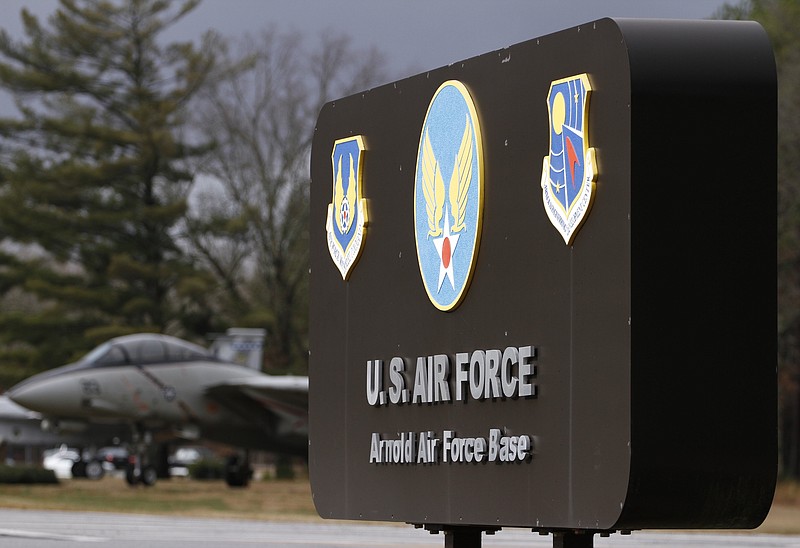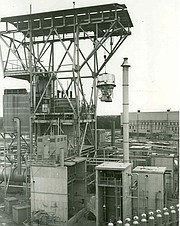Arnold Engineering Development Complex
Arnold Engineering Development Complex is the largest complex of flight simulation test facilities in the nation. The complex was dedicated in June 1951 by President Harry Truman and named after five-star General of the Air Force Henry “Hap” Arnold, visionary leader of the Army Air Forces in World War II and the only airman to hold five-star rank. This complex has a replacement value of $11.8 billion for the 43 test cells presently located at Arnold Air Force Base, Tenn., and the complex’s two remote operating locations – the Hypervelocity Tunnel 9 in White Oak, Md., and the National Full-Scale Aerodynamics Complex located on NASA’s Ames Research Center at Moffett Field, Calif. The Tunnel 9 test facilities simulate flight from subsonic to hypersonic speeds at altitudes from sea level to space while NFAC provides a critical capability for aeronautics research, particularly rotorcraft research. Virtually every high performance flight system in use by the U.S. Department of Defense today and all NASA manned spacecraft have been tested in AEDC’s facilities. Today AEDC is testing the next generation of aircraft and space systems. For more information, visit AEDC’s website at www.arnold.af.mil.
Major changes could be coming to the Arnold Engineering and Development Complex in Tullahoma, Tenn., where demolition is planned for 13 antiquated facilities, balanced by 19 proposed construction projects that would bring testing capabilities up to 21st-century speed.
And as the nation's largest and most complex flight simulation facility for the military's latest aircraft, AEDC is all about speed.
AEDC officials say the work is in the environmental assessment stage now, and none of the projects have been funded.
The need to improve "is driven by current and future [U.S. Air Force] test requirements that necessitate modern facilities and expansion of mission-critical operations as well as demolition of obsolete and unused test cells and related test equipment," spokesman Jason Austin said.
AEDC's testing capabilities are limited at the moment because some facilities and the associated equipment in them is getting old or isn't used anymore. These shortcomings could limit testing operations and ultimately lead to a loss in revenue, officials said.
The improvement projects would enable AEDC to continue providing world-class logistics and mission support to the Air Force and other customers and keep revenue steady, officials said.
"No new test missions are anticipated," Austin said. "We are upgrading, modifying, replacing, altering various facilities to meet the needs of our customers."
The draft plans for demolition, he said, is a "general idea of what we would like to do should funding become available."
The timeline in the plan ranges from 2016 to 2022 and beyond.
According to the document, the work has three goals; first, to improve capabilities and facilities with upgrades, second, to bolster military personnel morale and skills with modern on-site training and health fitness facilities and, lastly, to reduce the physical footprint of AEDC with the demolition projects, according to the Programmatic Environmental Assessment for Implementation of the General Plan at Arnold Air Force Base Tennessee.
The overall effort should result in "reducing facilities-related costs by 20 percent by 2020."
The 13 "unneeded test facilities" comprising almost 28,000 square feet of space would be demolished and removed, along with associated testing equipment, according to the assessment. There are another eight demolitions associated with some of the new construction projects.
Some of the older facilities were used to test equipment like the XLR-91 engine for the Titan missile, tested from 1960 to 1962 in the J-3 test cell on the proposed demolition list. Austin said some of the other structures on the demolition list no longer have any equipment in them and the missions they fulfilled are long in the past.
Similarly, Test Cell J-2A, once used to simulate conditions at up to 450,000 feet of altitude for periods up to 30 days, is in mothball status.
Demolition and disposal would be coordinated with federal agencies to make sure federal environmental requirements are met, the document states. The goal of the General Plan is to establish a framework for programming, site planning, design, construction and resource management.
None of the proposed demolition projects involve any structures eligible for the National Register of Historic Places, but the U.S. Air Force "would consult with the Tennessee State Historic Preservation Office on a project-by-project basis and would comply with all requirements and recommendations consistent with" the proposed plan of work, officials said.
Other plans are aimed at making life more enjoyable for the people who work at AEDC.
"There are some non-test projects proposed which would improve our modest fitness center and install some golf course amenities," Austin said. There are also a couple of office space construction projects for the Center's Office of 'Special Investigations and Base Civil Engineering.'"
Nothing is set in concrete, however. Doing nothing to the old facilities also is an option, but that would mean some facilities would fall short of testing mission requirements, documents state.
Contact staff writer Ben Benton at bbenton@timesfreepress.com, twitter.com/BenBenton, www.facebook.com/ben.benton1 or 423-757-6569.


